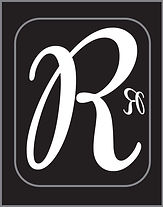"Winter Blues" or Major Depressive Disorder with Seasonal Patterns?
- _
- Feb 7, 2016
- 4 min read
Author: Thalia Bennett M.A., RP, C.C.C.

Outside is grey and gloomy, our mood reflects the season, we wish we could sleep all day and eat something that tastes more exciting than how outside looks, such as pizza or a sugary treat. We think it might be “just one of those days”, or a case of the “winter blues”. As time goes by, we notice changes in our lifestyle and in other aspects of our life that concern us. We think it could be more than the “winter blues”; however, we are unsure of if it could be something more serious.
How do we know if we are experiencing something more serious than the “winter blues”, such as major depressive disorder with seasonal patterns, formerly known as “seasonal affective disorder”? First, it is important to consult with a qualified health professional, such as a family doctor, about how we are feeling and about the symptoms that we are experiencing- so that we do not end up harming our self with a treatment concoction of our own. While we may think that we meet all of the criteria of the disorder, a physician is trained to rule out other physical or psychological factors and/or conditions that may mimic the symptoms. It also takes a physician, or another qualified health professional, such as a psychologist, to diagnose the illness. Some symptoms that we may notice before going to the doctor include:
• Depressed mood with a seasonal pattern (often beginning in the winter months where the days are shorter and there is less sunlight and often disappearing around a typical time of year, such as spring)
• Hypersomnia
• Lethargy
• Weight gain
• Increased appetite and cravings for carbohydrates
• Withdrawal from social interaction
The good news is that there are a variety of treatments available to combat the symptoms! Each treatment option depends on the unique person that you are. Finding the right treatment(s) for you becomes safer and easier with a relevant qualified health professional that can help to tailor treatment to your specific circumstances, experiences, and needs. Some of the more common treatments include:
• Light therapy
- Some options include: Receiving natural light by going for a walk outside, sitting by a window that lets in natural light, receiving artificial light through a fluorescent light box, or receiving artificial light through full/broad spectrum light bulbs.
• Sufficient sleep, both in quality and quantity
- Engaging in healthy sleeping habits and obtaining the recommended amount of hours of sleep per night.
• Nutrition
- Having a balanced diet, eating healthy, and ensuring that you have breakfast, lunch, and dinner on a regular basis. Also, avoiding toxins in the body like alcohol and non-prescribed drugs.
• Exercise
- Doing exercises that are right for you and staying physically active.
• Social interaction
- Staying in contact with people who can support you during this difficult time and who can help you to stay psychologically active.
• Psychotherapy and/or counselling
- Actively engaging in therapy sessions with a qualified health professional, such as a therapist, in order to understand what you are experiencing, the root of it, its antecedents, its impact, challenges around it, and in order to develop coping strategies.
• Antidepressant medication
- Taking prescribed-medication to help combat symptoms of the disorder, at the discretion of a physician. These medications may work on chemical imbalances in the brain.
Some of the treatments for this type of depressive disorder may become easier to understand when one keeps in mind the above symptoms and/or some of the risk factors of the disorder such as:
• Light deprivation
• Psychological factors (such as cognitive distortions)
• Biological factors (such as changes in neurotransmitters in the brain or changes in hormones in the body)
• Genetic predispositions
• Environmental factors (such as the loss of a loved one or childhood trauma)
As an example of a potential link between treatment of the disorder and its risk factors, it is well known that light therapy is an effective treatment for the disorder and this treatment option highlights the disorder’s connection with light deprivation. However, it is important to remember that even though two things are correlated, it does not signify that one causes the other. Also, some of the logistics behind treatment are more complex. For example, with regards to avoiding toxic substances, such as alcohol or non-prescribed drugs, not only may such substances change the balance of chemicals in the brain, but they may also change hormone levels as well as quality and quantity of sleep, which are all associated with symptoms and/or risk factors of the disorder.
In conclusion, while we may just want to curl up in bed with a couple glasses of wine until spring, hoping to avoid the “winter blues” or major depressive disorder with seasonal patterns, this satisfaction may be short-lived. Following the right treatment plan for you, with the help of a health professional, is important and will likely serve you better in the long-term.
Bibliography
American Psychiatric Association: Diagnostic and Statistical Manual of Mental Disorders, Fifth Edition. Arlington, VA: American Psychiatric Association, 2013
Grohol, J. (2004). Treatment for Seasonal Affective Disorder (SAD). Psych Central.com. Retrieved 31 January 2016, from psychcentral.com/library/seasonal_affective_treatment.htm
Hoefs, B. (2016). 7 Ways to Effectively Fight Off the Wintertime Blues | bpHope - bp Magazine Community. Bphope.com. Retrieved 31 January 2016, from www.bphope.com/blog/7-ways-to-effectively-fight-off-the-wintertime-blues/
Levitt, A. J., & Lam, R. W. (Eds.). (1999). Canadian consensus guidelines for the treatment of seasonal affective disorder. Clinical & Academic Pub.
Medina, J. (2015). Depressive Disorder with Seasonal Pattern. Psych Central.com. Retrieved 31 January 2
Mooddisorders.ca. (2011). Frequently Asked Questions - Seasonal Affective Disorder (S.A.D.) | Mood Disorders Association of Ontario. Retrieved 31 January 2016, from www.mooddisorders.ca/faq/seasonal-affective-disorder-sad.
Nimh.nih.gov,. (2015). NIMH » Depression. Retrieved 31 January 2016, from www.nimh.nih.gov/health/topics/depression/index.shtml#part_145396016, from psychcentral.com/disorders/depressive-disorder-with-seasonal-onset/


Comments